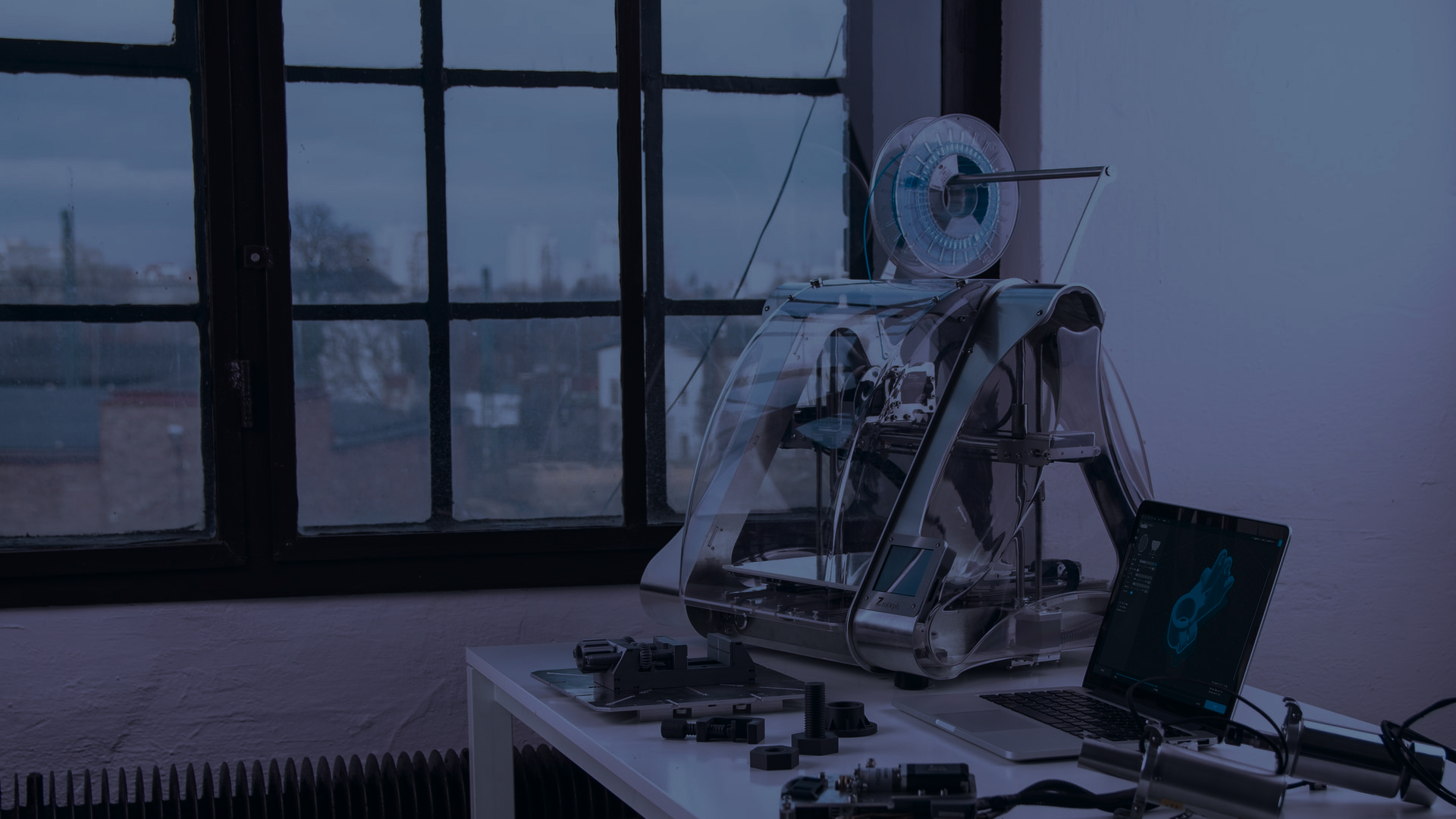with hundreds of industrial-grade 3D printers for business and manufacturing, it’s not easy to find the best fit for your needs. Whether you’re buying your first printer or your tenth, evaluating the latest technology and newest companies can be a challenge.
Your first step should be to understand your needs, then to learn about 3D printing technology, and finally to narrow down your search to select manufacturers. Additionally, you’ll need to request and evaluate sample prints, understand the factors that contribute to cost, and then create a business case for upper management.
Plan your 3D printer purchase based on a business case
Find out why you want a printer before deciding which to buy. What business needs will 3D printing address, what strategic goals will 3D printing help your company achieve, or what new opportunities will 3D printing present to your company? Link these needs to your company’s overall strategic plan, and detail them clearly in a 3D printing proposal designed to capture management’s attention. Consider these questions when determining your printer purchasing objectives.
Do you wish to purchase a 3D printer to:
- to lower prototyping or tooling costs?
- as a means to make prototyping iterations or production part prints faster?
- to produce spare parts on-site, at the time of need?
- to improve your overall production efficiency?
- to gain a competitive edge by getting new products to the market faster?
- to print unique parts that cannot be made any other way?
- to reduce material costs or waste?
- to keep the development of your intellectual property in-house?
- to offer customized products to customers (such as in healthcare or consumer products)?
To establish your printer selection criteria, you need to determine what business needs your printer will satisfy. You may find along the way printers and materials that will help you with problems you didn’t know you had and open the door to new opportunities you hadn’t imagined.
Here’s how companies are taking advantage of 3D printing today
It’s useful to find companies that faced the same printer purchasing challenges that you are facing now in order to better define your needs. Case studies are a great way to learn how similar companies made purchasing decisions. You can find case studies on manufacturer websites, although they can be a bit biased.
Hire a consultant who can help you with 3D printing
The process does not have to be performed by you alone. In addition to printer resellers, 3D printing consultants are available to guide you through the process of assessing your needs and evaluating your options.
Many printer manufacturers have created consulting subsidiaries, such as Additive Minds 3D Printing Consulting by EOS and AddWorks by GE. Also, the usual suspects in business consulting, such as Deloitte, PwC, and EY, provide experts in additive manufacturing, as well as useful industry research and summits.
There are also a number of smaller, independent consulting firms that specialize in sectors (such as healthcare and automotive) or applications (such as prototypes, metal spare parts, etc.) that fall within the additive manufacturing spectrum.
What you have to know before purchasing a 3D printer
Throughout the years, 3D printing technology, materials, and software have evolved continuously. Even if you have solid base knowledge, stay up-to-date.
Types of 3D Printers
You may not yet know which kind is right for you, so you must familiarize yourself with different types of 3D printing technologies.
Types of Materials
There is a huge range of materials you can 3D print, from titanium to paper and everything in between. View these articles to see what is most commonly printed in which materials. You should also familiarize yourself with the general cost of materials, which can vary widely, and whether you want a printer that prints with third-party materials or only with those from the manufacturer.
Types of Software for Digital Design & Printing
Although you may already be familiar with the range of software used for digital design, from AutoCAD to SolidWorks, 3D printing has some unique applications and file formats to master if you want to make the most of your prints.
The Top Professional & Industrial 3D Printer Brands
There’s no longer a clear distinction between a consumer 3D printer and one used in a business or manufacturing environment. Many printer manufacturers popular with consumers, including Ultimaker and Formlabs, have transitioned to professional markets while maintaining their ease of use. Advances in technology have also allowed powerful printers to take up less space. In summary, stay flexible.
In some industry reports, anything below $5,000 is not considered an “industrial” machine, but this can be misleading. Using labels such as industrial or professional does not necessarily reflect industry standards, capabilities, or feature levels, so feel free to be skeptical about their applications.
When you narrow your printer search using detailed criteria of what you need, you’re likely to find a wide range of printer price points from a long list of manufacturers.
Here’s how to request a sample print you can count on
You may not be able to see a large industrial machine in action without visiting the manufacturer, a customer, or a trade show, but you can always request sample prints.
Ask manufacturers to print a sample of a part that is representative of your typical printing needs, and resist manufacturers who try to dictate your sample print. Be sure to request a print sample that accurately reflects the complexity and material of the parts you intend to print. When comparing different models from the same manufacturer, request the same print from both machines (where possible).
You’re good to go if you already have a CAD model of your part. You may need to hire an industrial design firm to scan your part and create a digital file if it doesn’t exist digitally.
The manufacturer should provide you with a report stating exactly how long the part took to complete, what post-processing was required (if any), and how much material was used. By using this information, you can estimate 1) how many printers you need to meet your output goals, 2) how much material costs you should budget for, and 3) what additional equipment you might need.
Test Your Sample Part
Review your prints’ functionality, weight, feel, and strength, as well as any other features that are critical to your needs. You can also share it with the staff who will be working on it to get their feedback. Compare sample parts from several vendors and submit them to the same tests and evaluations.
Expenses not anticipated
In order to make an informed purchase decision, it’s important to know how to calculate the total cost of a 3D printer. The sticker price of your machine is only one factor to consider.
When estimating the amount of your final investment, take into account the costs of:
- the printer
- materials, including whether or not you’re locked in to buying materials from the manufacturer or can buy third-party materials
- required additional equipment, such as a furnace to sinter metal parts or a wash-and-cure station for resin parts
- optional equipment, such as a print monitoring system
- a production space, which may require special ventilation, sinks, tables, etc.
- software subscription in addition to standard design and slicing programs, which may include simulation software,
- training staff, including designers, engineers, and machinists
- installation and maintenance, which may include travel expenses if the reseller is far away
Materials can significantly increase your 3D-printing budget. For many reasons, it is normal to underestimate how many prints you will do. A final satisfactory print will require a lot of experimenting. The process of additive manufacturing is complex and involves many variables. Despite optimizing your digital design and testing it with simulation software, small inconsistencies in the surface finish or materials can affect your final print. Additionally, unpredictable effects can always occur during the printing process.
Find out how often the printers fail by talking to the manufacturer.
Another reason you may underestimate your material costs is that you may find that 3D printing has more applications than you originally anticipated. Some companies buy 3D printers to produce prototypes and then realize its benefits for end-use parts, such as tools and fixtures, or even production parts.
The price of industrial 3D printers is declining as more companies enter the market. In addition, keep in mind that price and size aren’t always a reflection of quality, so compare a variety of machines.
Where is the best place to buy?
During your printer decision journey, you probably worked directly with manufacturers. At some point, they may refer you to a local reseller who will handle purchases, installations, training, maintenance, supplies, etc. Additionally, you can buy machines that bridge the consumer and professional categories, and don’t need installation or service, through a variety of resellers and online sellers, including Dynamism, iMakr, and MatterHackers.
There may be few resellers available for larger machines, so it is important to know what to expect from them. For example:
- How well do they know the machine?
- When will the initial installation take place?
- Do they offer training?
- What is the turnaround time for repairs?
- Is it possible to bundle additional items with the printer (software, post-process equipment, training) to make the deal more attractive?
- It is common for printer manufacturers to have a number of resellers that specialize in different industries, such as higher education, dental, and hospitals, which require specific knowledge.
A printer manufacturer’s resellers will submit bids on the same proposal if your company or government procurement office requires multiple bids on major equipment. Resellers can negotiate their own prices with manufacturers, but their profit margins can be lowered or they can bundle other items or services to make their offers more attractive.
Manufacturers today also offer leasing instead of buying as an alternative to financing.







